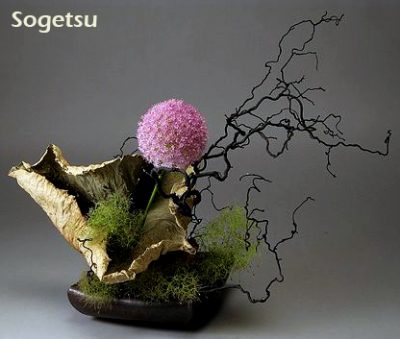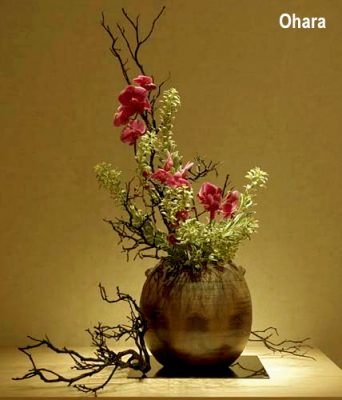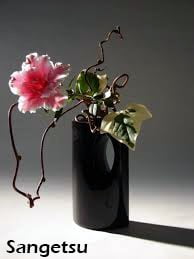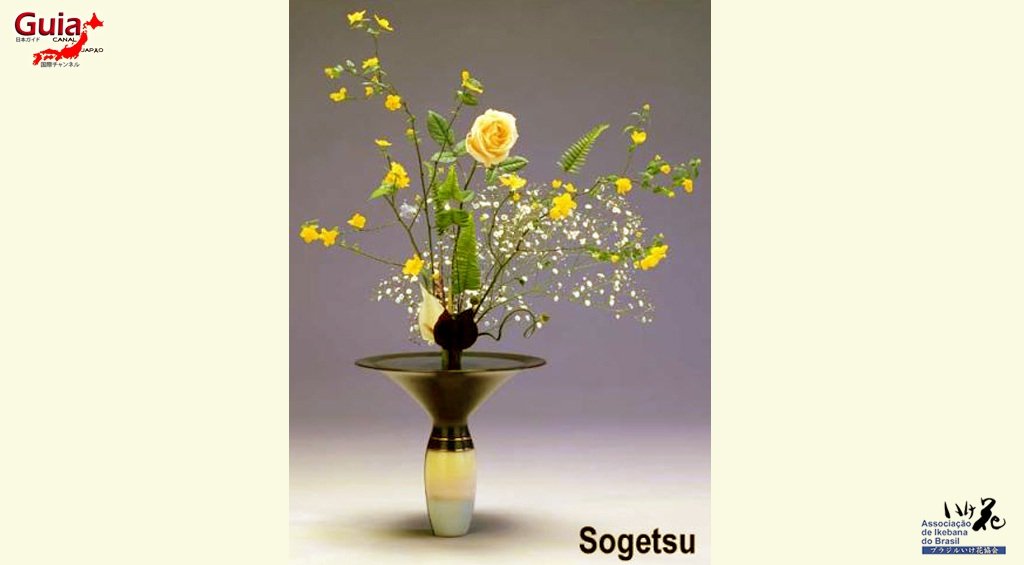
A Ikebana (生け花) originates from India, where the arrangements were intended for Buddha, and was personalized in Japanese culture, which made it better known. The expression Ikebana means (Living Flowers).
The living flowers of Ikebana, an ancient oriental art or religious offering that is normally composed and arranged on altars.
Ikebana is the art of assembling flower arrangements (floral arrangement) also known by the expression Kado (floral arrangement as a path to wisdom), in its assembly, it follows certain rules, dry twigs and leaves of various plants are used that make a type of frame for the flowers. The structure of a Japanese floral arrangement is based on three main points that symbolize heaven, earth and humanity, although other structures are adapted depending on style and choice.
The main meaning is that it is an offering, an act to please religions, but it is also practiced by people of noble origin. There are different styles of ikebana, Brazil even has an Association, where practitioners have an entire spiritual tradition, a concentration on enjoying and appreciating nature.
The art of Ikebana arrived in Brazil with the first immigrants. The Brazilian Ikebana Association was officially founded in 1962. During this fifty year anniversary of struggle, perseverance and, above all, a lot of love and dedication, the artistic and cultural baggage, inherited from ancestors, is transmitted by volunteer teachers, each one following their own rules and techniques, seeking the essentials of Art, Balance and Beauty.
Ikebana Styles
- Ikenobo – It is the oldest, and are arrangements with devotion to the gods, and are decorated with branches.
- Sogetsu – It is one of the newest styles, it became well known after Queen Elizabeth II and Princess Diana started attending schools to learn this technique..
- Ohara – It is a montage of branches and flowers almost stacked.
- Sanguetsu – It is a style of ikebana created by Mokiti Okada, whose basic notion is respect for nature. This is a totally different style from the previous ones, because it seeks to use materials in such a way that they look as natural as possible.




History of Ikebana
It all started in India, when a group of religious people used grandiose decorations on their altars to Buddha. At this time, all flower decorations had to be done manually to give meaning to the offering. According to the culture, which remains today, when you put your hands to produce an object, you also put part of your soul, your energies.
The habit of making arrangements then left India and reached China. During this same period, the first School of Floral Art, which had its origins in Japan, sent a scholar named Omono Imoko to explore Chinese culture and tradition. In this way, the technique reached Japan, where it was perfected and became known around the world. As a result, ikebana arrangements stopped being offered only to Buddha and began to be offered to other deities and even ancestors, becoming a routine in Japanese culture.




















